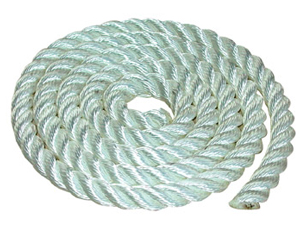ROPE, nylon, Ø 6mm, braided, per metre
Valid Article
ROPE
Definition
Rope available in different materials and different diameters for many uses.
Specifications
Continuous fibre rope, twisted or braided.
Available in 3 materials:
- natural fibres (NF)
- polypropylene (PP)
- polyamide/nylon (NYL)
A twisted rope will be stronger than a braided rope of the same material.
Nylon resists UV better than polypropylene.
NF | PP | NYL | |
Wear resistance | + | + | ++++ |
Elasticity | + | ++ | ++++ |
Tensile strength | - | + | ++ |
Price | low | medium | high |
Instructions for use
The choice of rope will depend on the intended use. 3 types of use can be distinguished:
Light use
- Function: fixing light items, tying up packages, etc.
- Choice: depending on local availability and price. Any material would be suitable: sisal, Manila hemp, other natural fibres etc.
General use
- Function: pegging down a small tent; constructing a shelter made of plastic sheeting; fencing; tying down a load on a vehicle etc.
- Choice: polypropylene, diameter 5 to 14 mm.
Heavy-duty or long-term use
- Function: pegging down a large tent, towing a vehicle, securing a radio mast etc.
- Choice: polypropylene, diameter 10 mm and above, or nylon, diameter 6 mm (20 mm for towing a vehicle). Nylon is preferable for long-term use.
To avoid a nylon rope unravelling, you are recommended to melt the ends.
For family shelters made of plastic sheeting, the larger the diameter of the rope used as a ridge, the less it will damage the sheeting.

